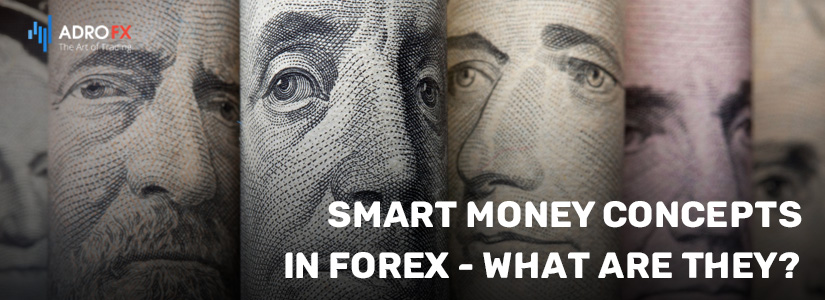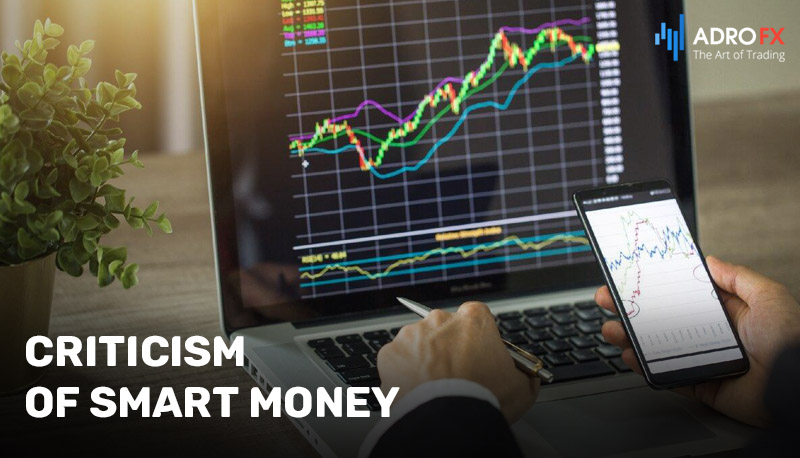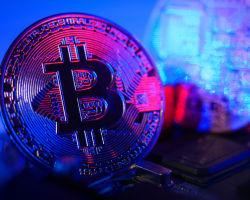Smart Money Concepts in Forex - What Are They?

The world of finance is full of phrases and terminology, and one of the most common is "smart money." Smart money refers to experienced traders who have access to more information and knowledge than amateur traders or individual investors. In the world of cryptocurrency, smart money is often used to refer to large institutional investors, banks, hedge funds, and corporations who invest in the market. This article will explore the origins of the smart money concept, its relevance to trading, and how banks use smart money strategies to make profits. Additionally, we will take a closer look at the three phases of a bank's trading strategy: accumulation, manipulation, and allocation.
What Is Smart Money?
Originally, the concept of smart money came from gambling, when less experienced players bet on the winnings of other players, whom they considered more experienced.
The creator of the strategy is trader Michael Huddleston, also known online as the Inner Circle Trader (ICT). According to his theory, the cryptocurrency market is controlled most of the time by so-called big players who are trading professionals. They are the ones who determine the price of the asset and the current trend direction, as they operate with the largest volumes of invested funds. It is believed that their behavior should be carefully analyzed because of their experience and awareness, and, often, the availability of important insider information to them. It is called "smart" as opposed to "dumb money," which is formed by hamsters or inexperienced traders who have limited important information to understand the market situation.
For example, according to a BDC Consulting study published in August 2021, 42.66% of all existing Bitcoin cryptocurrency tokens are held by major market players and professional investors. That is, almost half of all coins are regulated and managed by individual companies, well-known personalities, and hedge funds that are interested in using cryptocurrency for profit.
Examples of smart money traders are:
- Large banks such as JPMorgan Chase and Citibank;
- Central banks;
- Hedge funds;
- Large institutions such as large insurance companies and global corporations.
The smart money strategy implies, first of all, the analysis of the behavior of big players in the market. The main idea of the strategy is often expressed by the phrase "follow the smart money". The necessity of knowing and using its basics in trading is determined by the influence of strong investors on the price movement. So one of the main mistakes of traders is not taking into account this factor and basing their own strategy strictly on the data of technical analysis. The important fact that they do not take into account is that the major market players are also familiar with these analysis algorithms and can assume how traders would behave during the formation of a certain situation in the market.
Here we can give the following example. Intraday traders mark the triangle pattern on the chart with the price range converging at an angle to one point by means of analysis. It is assumed that the price will have to rally upwards with a breakdown of the upper boundary after it has passed. However, as a result, the chart, on the contrary, bounces down and only after a certain time interval does the price recovers its movement and comes back to the uptrend. One interpretation of such price behavior is an indication of the intervention of the big players, who thus were able to make a profit and force traders to close by Stop Losses.

Trading Strategies of Banks
Any bank is constantly making profits from trading in the forex or any other market. So how do they do it? They have many strategies and algorithms that they use to make all of their trades. But of all these strategies, there is one that is more common than all the others. It can be divided into three phases.
Phase 1: Accumulation
This is the first step of a bank's trading strategy. Banks never skip this step because it is the starting point for the next two.
Banks can't just put all their money into a trade all at once when they want to make a trade that will result in a sharp jump in the direction of their position. Don't forget that they have a lot of money to trade. Traders could just sit back and wait for the banks to make trades to copy them. However, this will lead to problems in the long run.
For this reason, banks first accumulate enough entry points for long or short orders over a period of time. In other words, banks make small purchases or sales, depending on which way they want the market to go.
Suppose the banks want to stimulate an uptrend. In this case, they open a lot of long positions at intervals of hours or days. Their entry points are shown in the illustration below. All this time the retail traders are busy selling, and the banks are actively buying.
At the same time, the price can go down for a while, but not for a long time. In addition, the price can move up and down within the channels formed by support and resistance levels. When you see this behavior, retail traders say the market is in consolidation. Sound familiar? But in reality, retail traders are watching the actions of the big players building their positions.
And that brings us to the next phase of bank trading strategy.
Phase 2: Manipulation
This phase comes second in bank trading strategy. What happens in it has many names. You probably know some of them. Do you know at least some of them? "False breakout," "false push," "hunt stop," and bull or bear trap.
During consolidation periods, many retail traders place pending trades above or below the consolidation zone. They hope to catch a breakout when it occurs. But instead, a false breakout occurs. A temporary breakout begins, which activates their orders, and then suddenly reverses direction, knocking their stop losses. When this happens, know that it's the banks manipulating the market.
One of the reasons these traders are losing their money is because they don't have proper breakout trading strategies. The Stop Loss Clusters indicator, helps you determine where most traders have placed their Stop Losses.
Many small traders often complain that the forex market is unfair to them. At some point, they feel confident that the price will go in one direction. They enter a trade in that direction, and suddenly the price reverses in the opposite direction. These traders are victims of bank manipulation of the market.
Phase 3: Allocation
This is the third and final phase of the banks' trading strategy. It is here that the banks make one last push in the direction they want. Their previously hidden positions become obvious.
This is often the best moment when retail traders can profit. Suppose the market starts an uptrend and retail traders try to follow it by opening buy trades. The longer the trend lasts, the more buyers are in the market.
However, this is the moment when banks do what they do best: sell when the crowd is buying and buy when the crowd is selling. There's a special term for this: contrarian trading. Banks start to accumulate positions to prepare for a new trend, which usually goes in the opposite direction.
When this happens, we say that price has entered an overbought or oversold area and must make a U-turn.

Applying Smart Money Strategy
The most popular strategy in smart money is trading with the identification of the so-called Order Block. It is based on an understanding of how banks and investment companies bring their assets to market. If a major player wants to sell or buy large amounts of an asset at once, it is bound to affect the value of the asset, making the next purchase less profitable for them. To avoid this, they often use order blocks in the market to equally distribute the available assets.
Regular traders use this feature because it will have an effect on the price but it is more even than if the big player sold his assets in one trade. On a Japanese candlestick chart, the starting point for placing a block of orders is a price pattern where the next candlestick in a sharp impulse movement completely overlaps the previous one. For example, at the beginning of a bearish trend, a red candle overlaps a green one, and before a bullish one - a green candle overlaps a red one. The order block zone often becomes the level, to which the price returns after the closing of all orders, which can also be used in trading.
In practice, placing an Order Block can serve as follows. At the moment when the price has reached its peak, the appearance of the Order Block pattern will be a signal for its soonest reversal. Depending on the color of the candle, with which the order block starts, the next trade opens in a long or short - with the green one going up, and with the red one going down.
Other price patterns are also used in smart money trading:
An imbalance or fair value gap is a candlestick pattern that illustrates a price move up or down too quickly. It occurs when there are no opposing orders, such as an upward impulse candlestick in the absence of sell trades. As a result, this area that the price overcame too quickly becomes the level where the price tends to return to in the future.
Breaker Block - indicates that the price has overcome the order block level. It can appear on the chart in the form of an impulse candle, rapidly changing the existing structure of price movement.

Criticism of Smart Money
The smart money strategy is often criticized by experienced traders. They believe that it was originally based on postulates that are impossible to prove. For example, it is considered unprovable that the major players can seek to manipulate ordinary traders. Also, it was not proved exactly which strategies are used in the market by big investors and companies. This information could only be obtained from insiders, who are often reluctant to reveal all the details.
This strategy is also viewed without much respect because it is quite complicated and its followers have their own terminology, which often differs sharply from the standard language of traders. That is why it is not recommended for beginners as it can confuse and complicate the learning of other strategies. Also, smart money originally came out of the traditional currency market and some traders question its applicability for trading in the cryptocurrency or stock market, which, however, has already been repeatedly refuted.
Advantages and Disadvantages of Smart Money Strategy
The smart money approach has both advantages and disadvantages. First, let's consider the advantages. Among them:
Reduced risks. If you are confident that you have accurately identified the "movement of smart money", there is a high chance that the chosen strategy will work, bring income and reduce the probability of losses.
Stability. Following a smart money strategy does not necessarily bring a fast and large income, but it allows you to steadily make a good income. It is a reliable strategy for those, who are not ready to make forecasts on the market.
Confidence. For many beginning investors, the concept is psychologically comfortable.
Disadvantages of the method include the risk of reduced liquidity of the asset, when large capital moves in one direction, as well as the possibility of speculative bubble formation. This is a situation where the interest in an asset is caused not by the value of the coin itself, but by a certain pattern of behavior of market players. Once inflated to the maximum, the bubble bursts, that is, the price of the coin collapses sharply.
Conclusion
The smart money trading strategy is based on the analysis of the behavior of big players in the market, such as banks, hedge funds, central banks, and large institutions. It is important to understand the basics of this strategy in trading to avoid the mistake of basing your own strategy strictly on the data of technical analysis. Smart money traders have a clear trading strategy that includes accumulation, manipulation, and profit-taking. Retail traders must learn to follow the trend established by smart money players and use stop losses correctly to protect their trades. Remember, understanding how smart money traders operate is a key factor in becoming a successful trader.

About AdroFx
Established in 2018, AdroFx is known for its high technology and its ability to deliver high-quality brokerage services in more than 200 countries around the world. AdroFx makes every effort to keep its customers satisfied and to meet all the trading needs of any trader. With the five types of trading accounts, we have all it takes to fit any traders` needs and styles. The company provides access to 115+ trading instruments, including currencies, metals, stocks, and cryptocurrencies, which make it possible to make the most out of trading on the financial markets. Considering all the above, AdroFx is the perfect variant for anyone who doesn't settle for less than the best.









